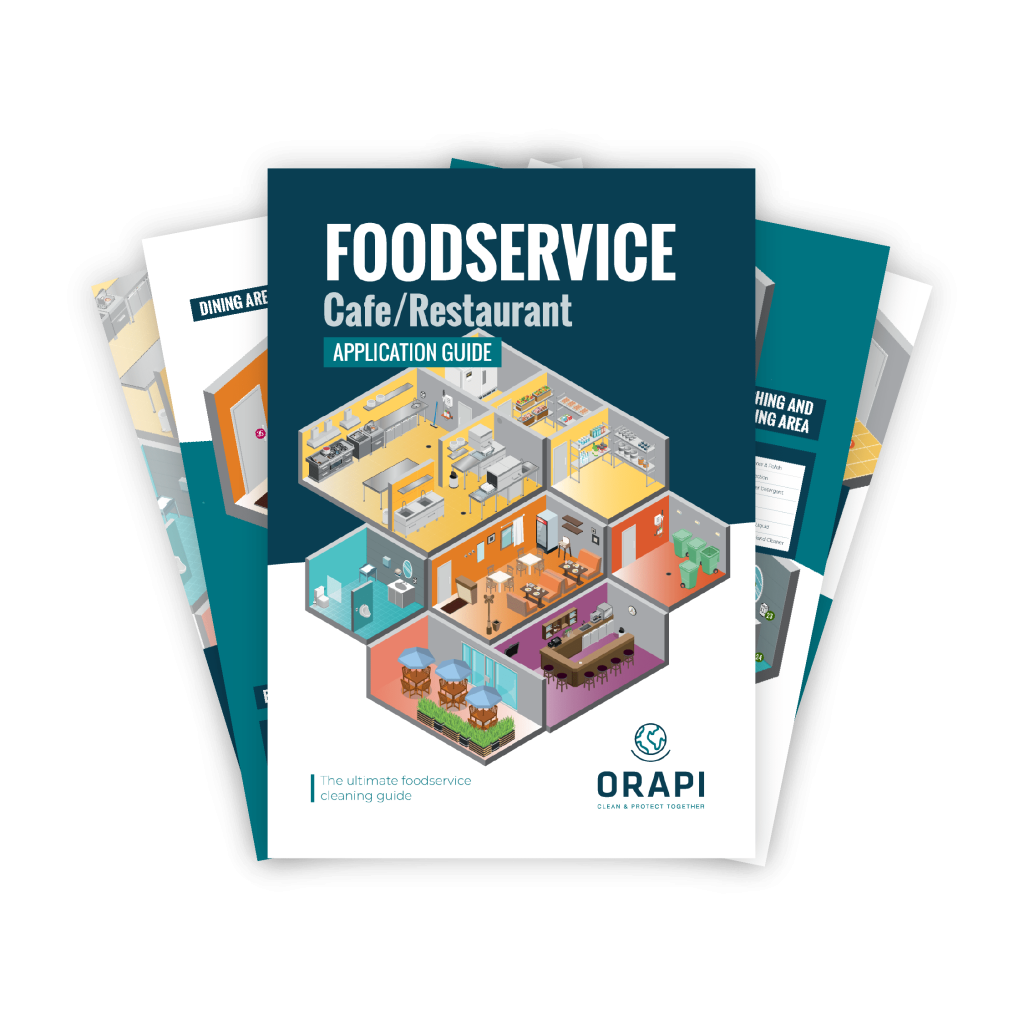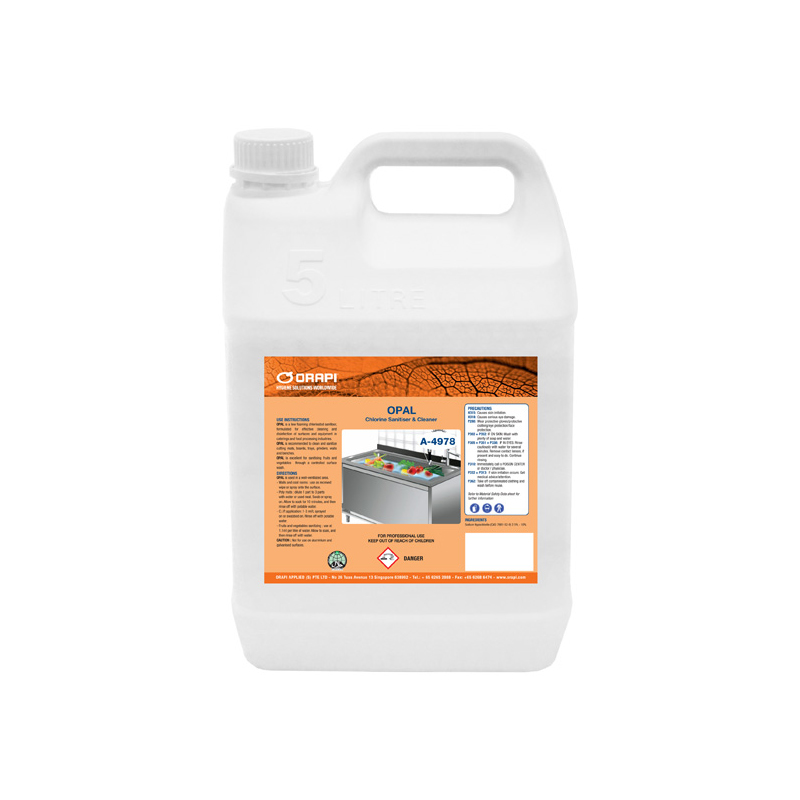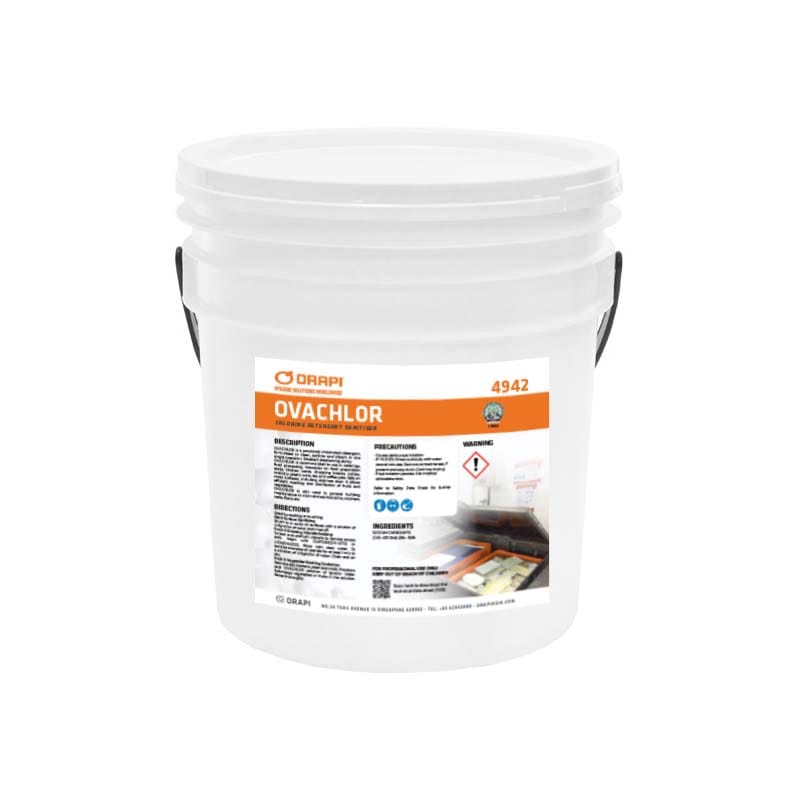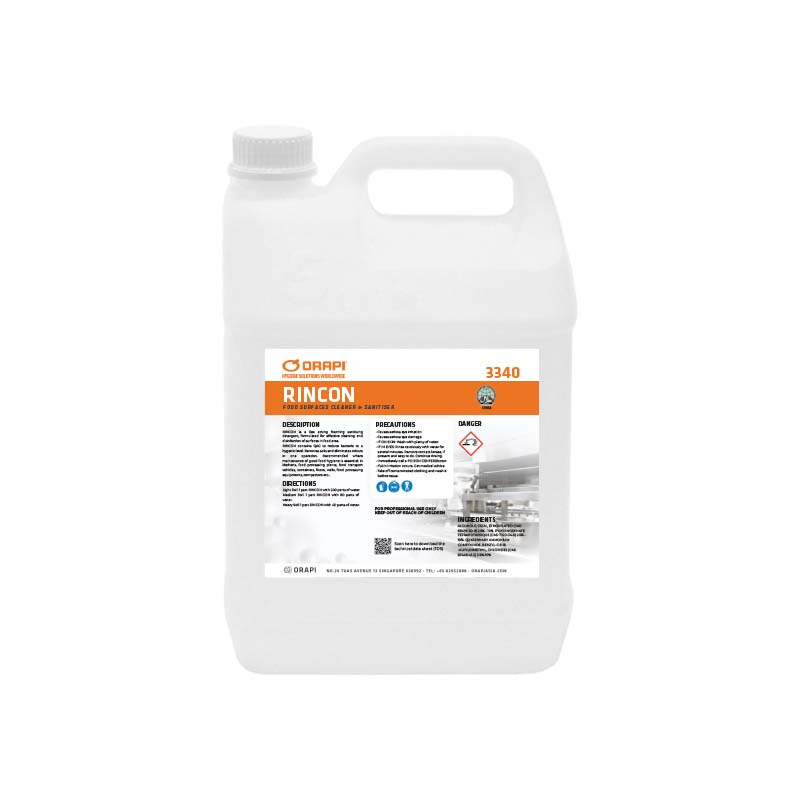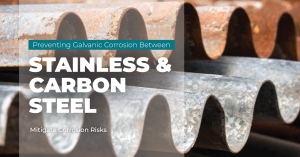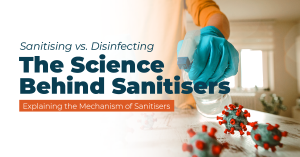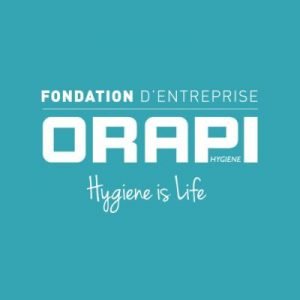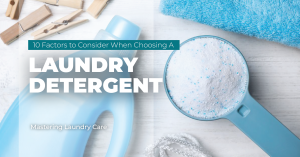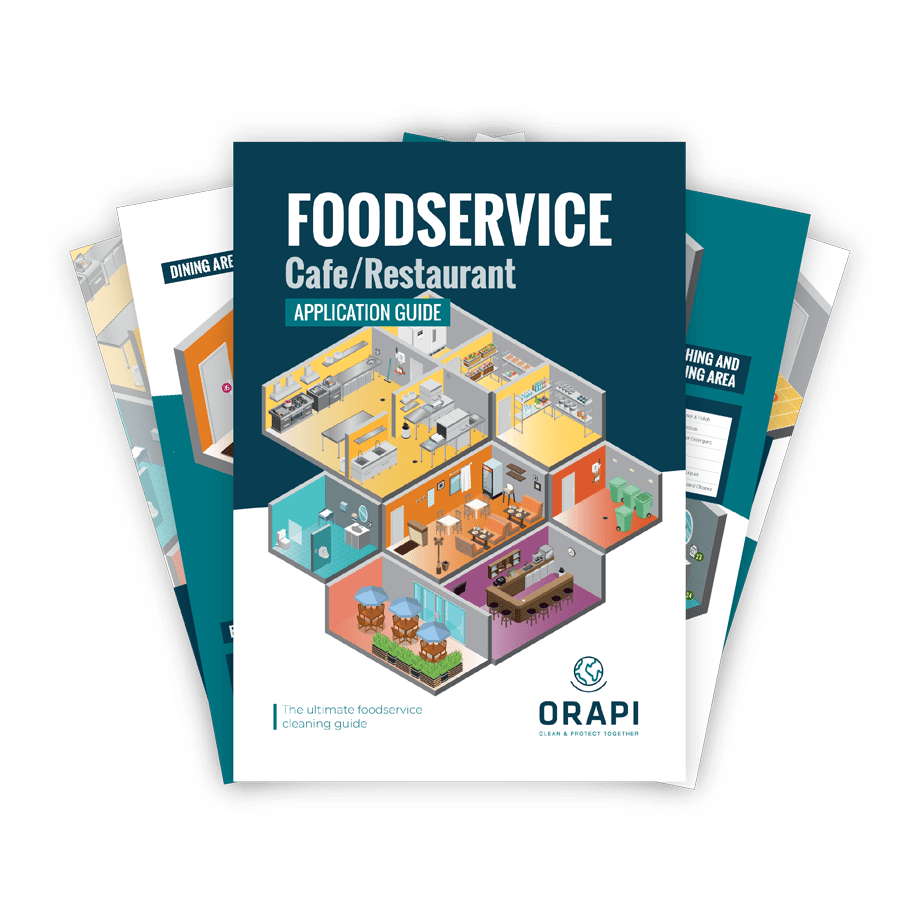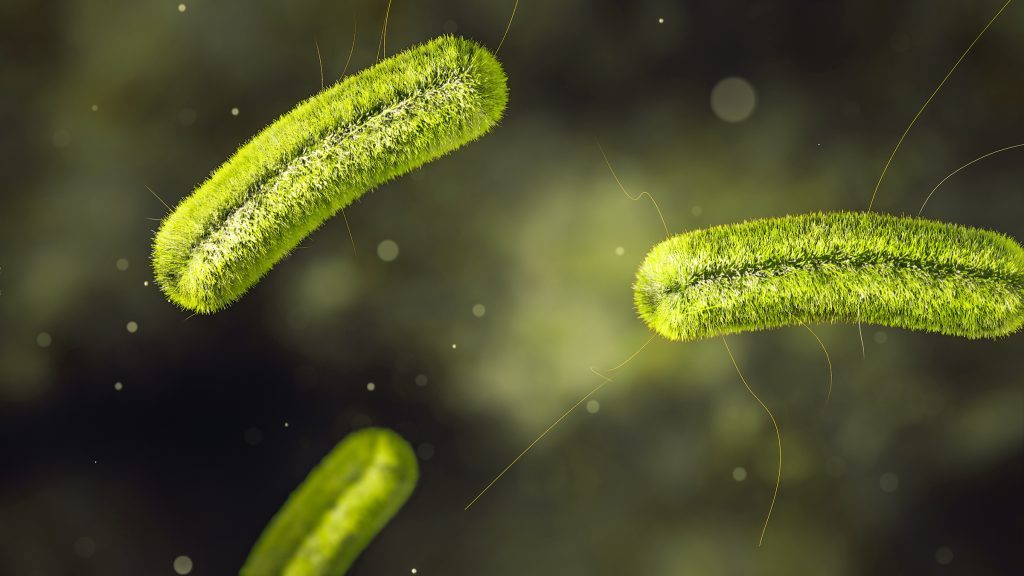
Listeria monocytogenes, or Listeria, is a dangerous bacterium causing severe illness in vulnerable populations. Listeria’s ability to thrive in various environments significantly threatens food safety and public health. To effectively combat this pathogen, it is crucial to identify potential sources of contamination and implement preventative measures. This article serves as a guide, highlighting ten key areas where Listeria can be found, enabling individuals and organisations to take proactive steps to reduce the risk of listeria contamination and protect consumer health.
Where Are Listeria Monocytogenes Hiding?
A high percentage of Listeria outbreaks can be directly attributed to poor hygiene practices and cross-contamination during food processing and storage. Within these environments, certain areas, known as dead spots, can become reservoirs for Listeria monocytogenes, allowing it to persist and potentially contaminate food products.
One of the critical factors in preventing food contamination is the identification of conditions that promote the formation of biofilms and persistent contamination. Biofilms are communities of microorganisms that adhere to surfaces and create a protective layer, making them highly resistant to cleaning and disinfection efforts. These biofilms can serve as hiding places for Listeria, allowing it to survive and potentially contaminate food over an extended period.
Listeria Contamination Hotspots
In the subsequent segment of the article, we will delve into 10 regions where listeria contamination may be encountered. We will also propose methods to manage listeria contamination within these areas, along with product recommendations.
1. Raw Materials and Ingredients
Raw materials and ingredients used in food production can be a potential source of Listeria contamination. Listeria can be naturally present in various environments, including soil, water, and plants. As a result, raw materials such as fruits, vegetables, meats, dairy products, and seafood can carry Listeria.
Contamination can occur anywhere along the supply chain, from cultivation and harvesting to processing and transportation. For example, produce can become contaminated with Listeria if irrigation water, soil, or manure used during cultivation contain the bacteria. In the case of meats, Listeria can be present in the intestines of animals, and during the slaughtering process, cross-contamination can occur if proper hygiene practices are not followed.
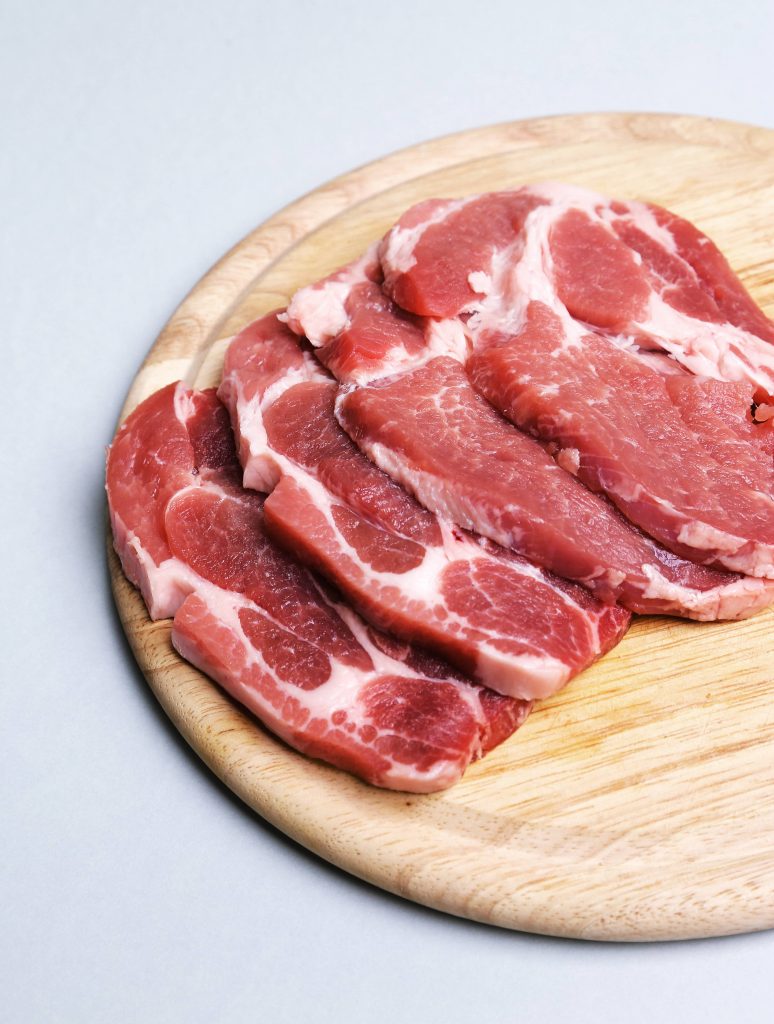
ORAPI RECOMMENDS:
CHLORSAN 150 is a bactericidal and yeasticidal effervescent chlorine release tablets, effectives against all micro organisms often found in food environments and healthcare industry : Lysteria, S. aureus, E. Coli, Pseudomonas aeruginosa, Aspergillus brasiliensis, candida albicans etc. CHLORSAN 150 provides a long lasting safe and stable form of chlorine
If raw materials or ingredients are contaminated with Listeria monocytogenes, they can introduce the bacteria into the food processing environment. Once inside the facility, Listeria can contaminate other surfaces, equipment, and finished products. This can happen through direct contact or cross-contamination, where the bacteria are transferred from one surface or ingredient to another.
Food manufacturers and processors must implement stringent quality control measures to mitigate the risk of Listeria contamination from raw materials and ingredients. This includes conducting thorough inspections and testing incoming raw materials to ensure they meet appropriate safety standards. Additionally, following proper handling and storage procedures, including maintaining proper temperature control, can help reduce the risk of Listeria growth and contamination.
ORAPI RECOMMENDS:
OPAL is a chlorinated antimicrobial sanitiser, excellent for sanitising raw fruits and vegetables during the washing or peeling process. It reduces 99.9% of pathogenic microorganisms (E-coli, Salmonella, Listeria…), insects and other dirt from fruits and vegetables.
2. Cracked Hoses in Direct Contact With the Ground
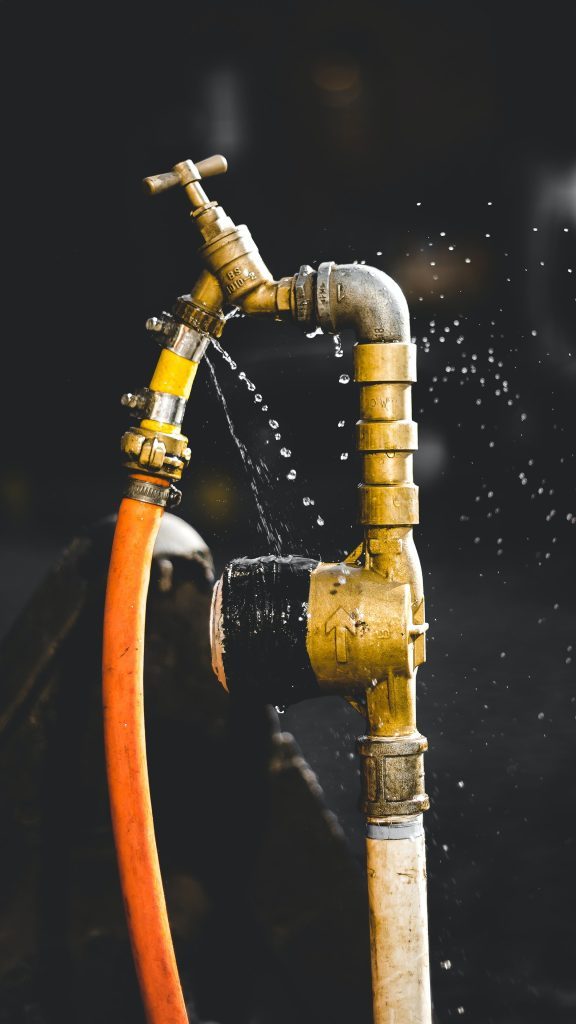
Cracked hoses in direct contact with the ground can become contaminated with Listeria in a few ways:
- If the hoses come into contact with soil or water containing the bacteria, they can become contaminated as they adhere to the hose’s surface.
- Animals like rodents or birds can carry Listeria on their bodies or in their faeces, which can contaminate the cracked hoses if they come into contact with them.
- Improper hygiene practices, such as inadequate cleaning and sanitisation of hoses used in agriculture or food processing, can lead to Listeria contamination as the bacteria multiply and persist on the hose surfaces.
Taking preventive measures like regular inspection, practising good hygiene, and protecting hoses from animal contact can significantly reduce the risk of Listeria contamination from cracked hoses in direct contact with the ground.
3. Stagnant Water in Food Processing Plants
Listeria can be present in stagnant water in food processing plants due to contamination from raw materials, equipment, utensils, and employees. If any of these sources carry Listeria, it can contaminate the water in the facility. Inadequate sanitation practices also contribute to the presence of Listeria in stagnant water, as improper cleaning and disinfection of water supply or storage tanks allow the bacteria to multiply and persist. Drains and floor areas in food processing plants where water accumulates can also become a breeding ground for Listeria if not regularly cleaned and sanitised. Additionally, the ability of Listeria to form slimy biofilm layers on surfaces like pipes and equipment allows them to persist and contaminate the surrounding environment. Finally, disturbing stagnant water, such as during cleaning or equipment operation, can generate aerosols that may contain Listeria bacteria, leading to cross-contamination if they settle on food contact surfaces or come into contact with food products.
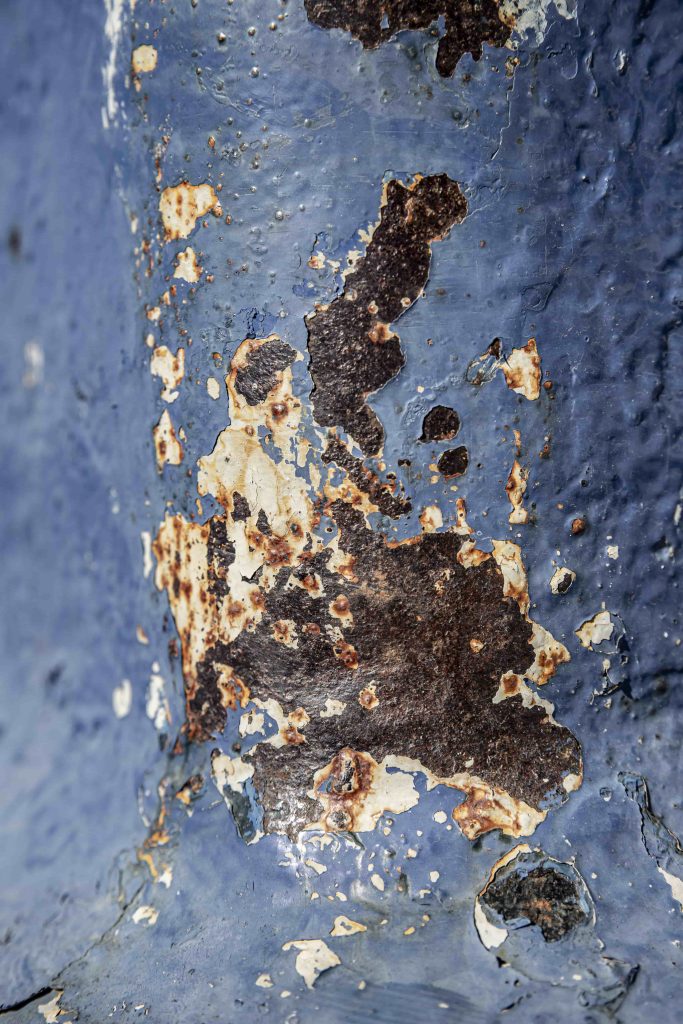
Preventing Listeria in stagnant water requires effective sanitation practices, including regular cleaning and disinfection, proper employee training, and regular testing and monitoring for Listeria in the environment to promptly identify and address any potential issues.
4. Conveyor Chains, Hooks, and Conveyor Belts
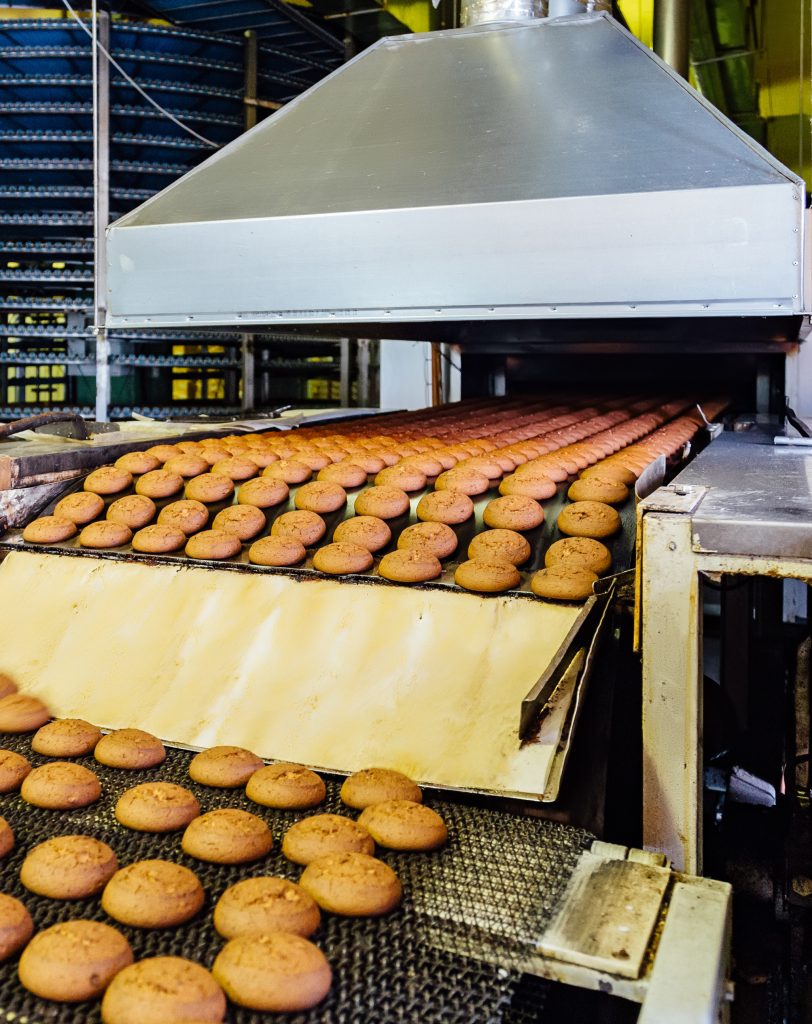
Listeria can contaminate conveyor chains, hooks, and conveyor belts in food processing facilities through various means. Improper cleaning and sanitation practices can allow Listeria to persist and multiply on these surfaces, especially when food residues and organic matter are present. Cross-contamination is another route by which Listeria can spread to the equipment, occurring through contact with contaminated surfaces, tools, or hands. Listeria also has the ability to form biofilms on conveyor chains, hooks, and belts, creating a protective environment for the bacteria. Additionally, Listeria-contaminated particles can become airborne during food processing activities and settle on nearby equipment.
To prevent Listeria contamination in these areas, it is crucial to establish regular and thorough cleaning and sanitation, employing effective cleaning agents and sanitisers. Proper equipment maintenance is essential to eliminate potential hiding places for Listeria. Separating raw and ready-to-eat areas and implementing physical barriers can minimise the risk of cross-contamination. Employee hygiene practices, such as handwashing, clean uniforms, and avoiding contact between hands and equipment, should be emphasised. Regular environmental monitoring, including swabbing and analysing samples from conveyor chains, hooks, and belts, can help identify contamination sources.
5. Cleaning Utensils and Equipment
There are several ways in which Listeria can be found in cleaning utensils and equipment that are not periodically replaced and used for multiple jobs without proper cleaning and sanitation. Cross-contamination can occur when utensils are used for different tasks without thorough cleaning in between, allowing Listeria from one surface to be transferred to another. Inadequate cleaning can also contribute to Listeria survival on utensil surfaces, as the bacteria can form biofilms that protect them and facilitate their growth. Additionally, improper storage conditions, such as damp or warm environments, can create suitable conditions for Listeria multiplication and contamination.
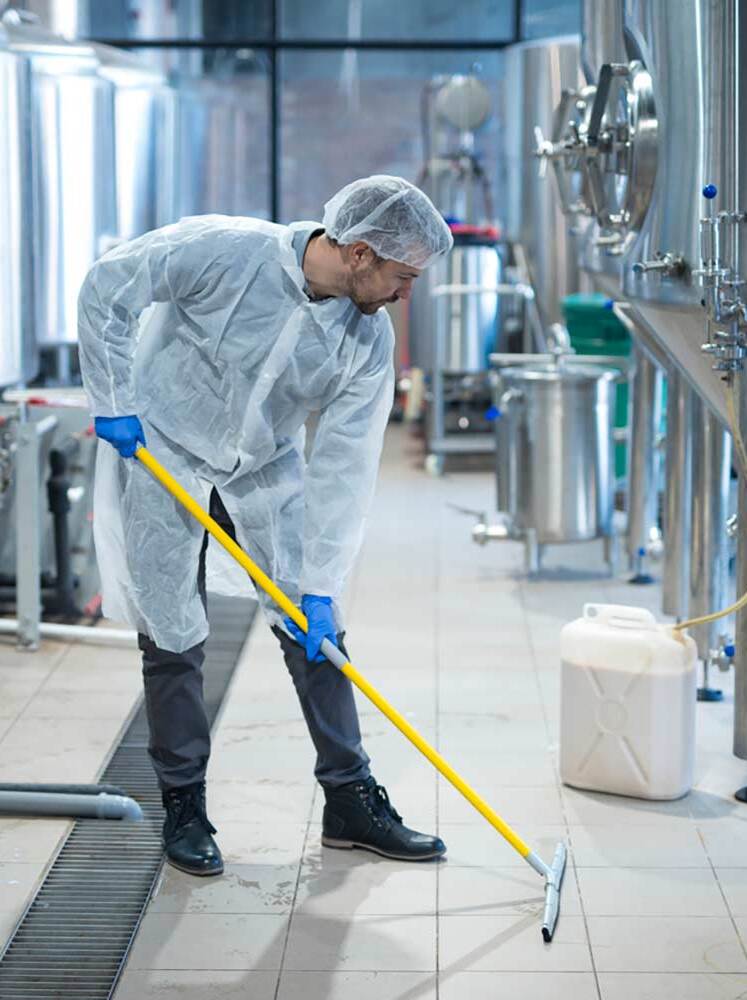
Adopting good hygiene practices and implementing proper cleaning and sanitation procedures is vital to prevent listeria contamination in utensils. This includes using separate utensils for different tasks—especially when handling raw foods—to minimise the risk of cross-contamination. Utensils should be cleaned thoroughly with an effective detergent paying close attention to areas where food particles may accumulate. It is important to store cleaned utensils in a clean and dry area, away from potential sources of contamination. Lastly, periodic replacement of utensils should be considered based on their condition and usage to ensure effective cleaning and minimise the risk of bacterial harbouring.
ORAPI RECOMMENDS:
HI CHLOR is a blend of self foaming surfactants, scale inhibitors, chlorine and fat emulsifiers to produce a safe and easy to use detergent combining excellent cleaning results and ease of operation. HI CHLOR is safe on all stainless and steel surfaces when used at the recommended concentrations.
6. Elevated Structures Such as Refrigeration or Condensing Units
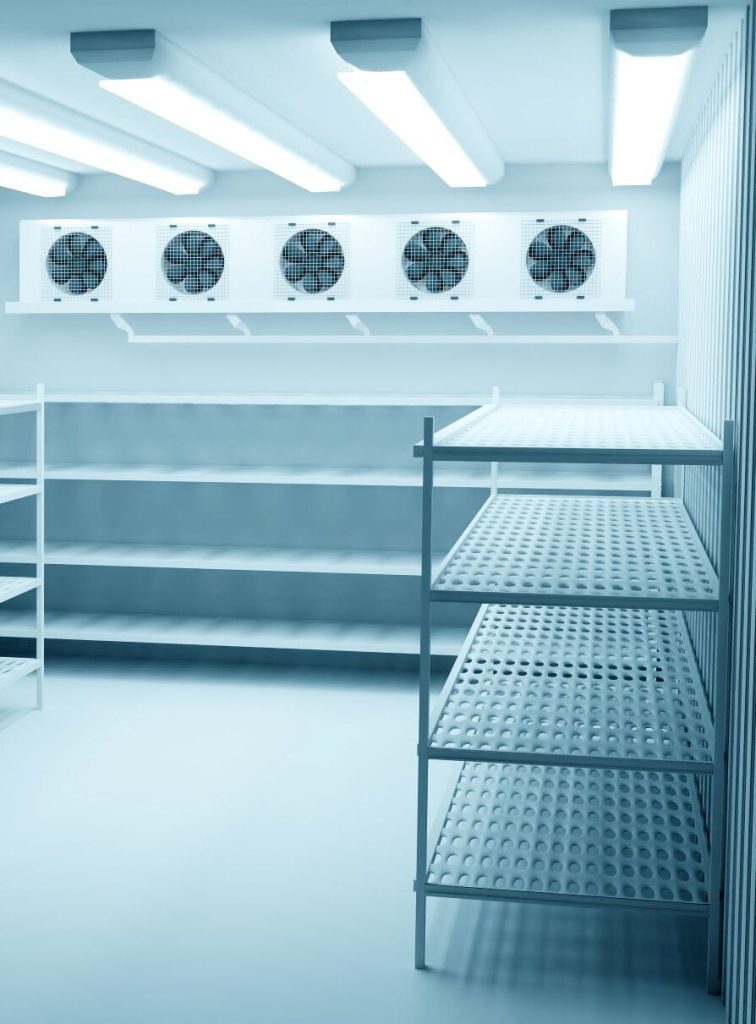
Listeria can be found on elevated structures like refrigeration or condensing units through various pathways. One common way is through contaminated surfaces, where inadequate cleaning and sanitisation can allow Listeria to thrive. This can occur due to spills or leaks of contaminated food or if the units are located in an environment with high Listeria contamination levels. Additionally, airborne transmission can be a factor, especially in settings where food processing or handling activities take place. Finally, insufficient air filtration or ventilation systems can enable Listeria-contaminated air to settle on elevated surfaces.
In order to avoid Listeria contamination, it is crucial to uphold consistent cleaning and sanitation procedures for refrigeration and condensing units. Furthermore, adequate air filtration and ventilation systems should be in place to minimise the presence of airborne pathogens.
ORAPI RECOMMENDS:
DESTINY is a versatile wide-spectrum disinfectant based on quaternary ammonium compound (QAC), for cleaning and disinfection of surfaces in food processing, dairy and beverage industries. DESTINY offers an excellent disinfection activity against gram-positive and gram-negative micro-organisms, bacteria, yeasts, moulds, fungi algae etc.
7. Hard-To-Reach Areas, Dead Spots and Unsuitable Angles
Listeria biofilms can stay resilient in areas with limited access or poor drainage. To prevent Listeria contamination, it is important to regularly and thoroughly clean surfaces, employing mechanical means like scrubbing to remove biofilm formations.
Some equipment and surfaces have irregular shapes and crevices that make effective cleaning difficult, providing hiding places for Listeria. Using equipment with smooth, easily cleanable surfaces is recommended, and regular inspections should identify areas that are hard to clean, leading to modifications or replacements to minimise such spots. Inadequate equipment design may create dead spots where fluids and debris accumulate, making thorough cleaning a challenge. Therefore, sanitation requirements should be considered during equipment selection or design to minimise dead spots and facilitate proper cleaning and draining.
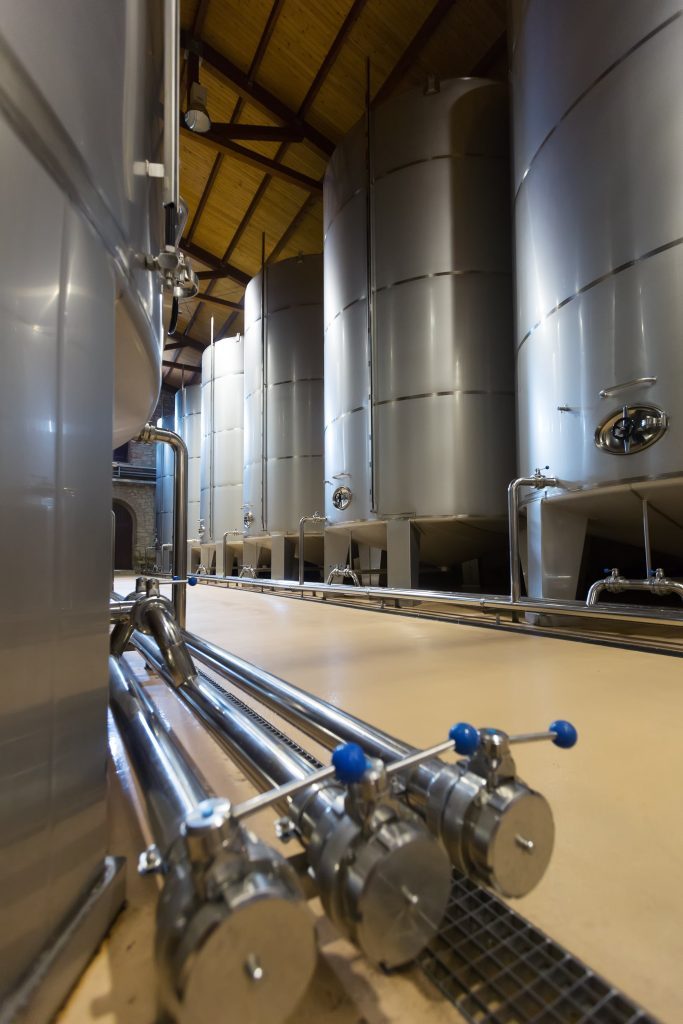
Regular monitoring, environmental sampling, and Listeria testing are essential to identify areas of concern. Immediate corrective actions, such as intensifying cleaning efforts, modifying equipment, or implementing additional control measures, should be taken if Listeria is detected. While these preventive measures can significantly reduce the risk of Listeria contamination, complete eradication from all hard-to-reach areas may not always be possible. Therefore, a comprehensive food safety program encompassing preventive controls, good manufacturing practices, and rigorous testing protocols should be implemented to ensure the production of safe food products.
8. Sewers and Drains
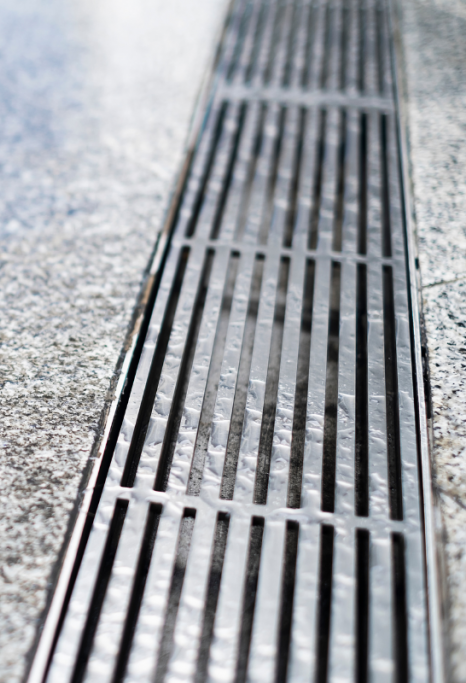
Listeria, a type of bacteria, can be present in sewers and drains for various reasons. Firstly, contamination from waste is a common pathway for Listeria to enter these areas. Sewers and drains receive wastewater from residential, commercial, and industrial sources, and if any of these sources are contaminated with Listeria, they can enter the sewer system and thrive in the suitable conditions provided by the sewer environment.
Secondly, Listeria can be naturally found in the gastrointestinal tracts of humans and animals, including livestock and wildlife. Therefore, when animal or human faeces enter the sewer system, they can introduce Listeria into the sewers and drains.
Cross-contamination is another way in which sewers and drains can become contaminated with Listeria. This occurs when contaminated water or waste comes into contact with surfaces in the sewer system, such as pipes, walls, or debris. Listeria can adhere to these surfaces and persist over time.
Additionally, food handling and processing industries, such as meat processing plants, dairy facilities, or food manufacturing units, may discharge their wastewater into the sewer system. If these industries experience Listeria contamination, the bacteria can be introduced into the sewers through their effluent.
To mitigate the potential for Listeria contamination, it is crucial to practise proper sanitation, conduct regular cleaning, and maintain sewer systems effectively.
9. Maintenance Tools
Listeria, a bacteria commonly found in various environments, including food processing facilities, can contaminate maintenance tools if not adequately cleaned and sanitised before use. This contamination can occur through residual bacteria, where tools retain Listeria from previous use and transfer it to other surfaces during subsequent use. Tools that come into contact with Listeria-contaminated surfaces can also pick up the bacteria and transfer it to other surfaces without proper cleaning and sanitation, facilitating the spread of Listeria. Additionally, Listeria can form biofilms on inadequately cleaned tools, which are resistant to standard cleaning methods and can persist as a source of contamination.
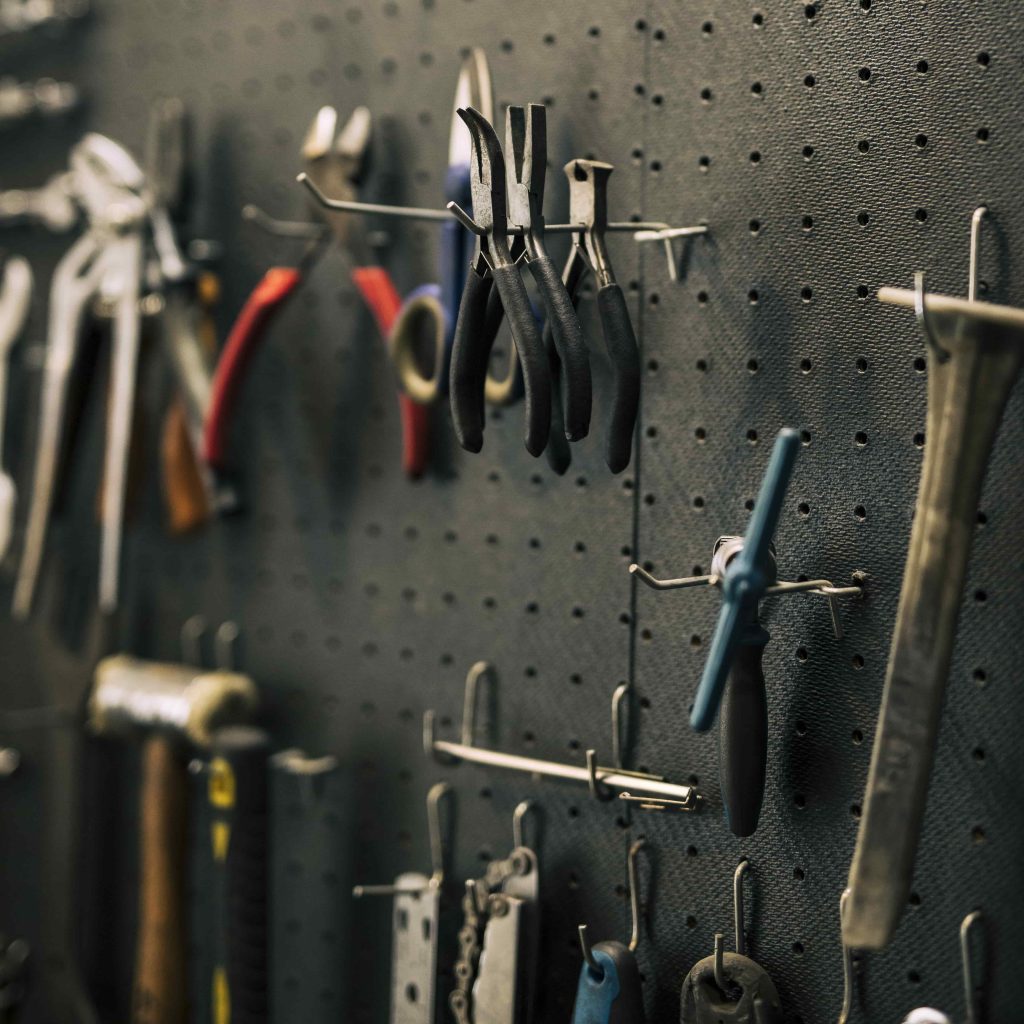
Adhering to appropriate cleaning and sanitation procedures is vital to prevent Listeria contamination. This includes visually inspecting tools for debris or contamination before use, thoroughly cleaning them with suitable agents, sanitising with approved products effective against Listeria, ensuring proper drying to avoid bacterial growth, and storing tools in a clean and dry environment. In addition, regular maintenance and cleaning of equipment and tools are crucial in preventing Listeria contamination, especially in food processing facilities and other areas where food is handled.
10. Cooling Systems and Cooling Towers
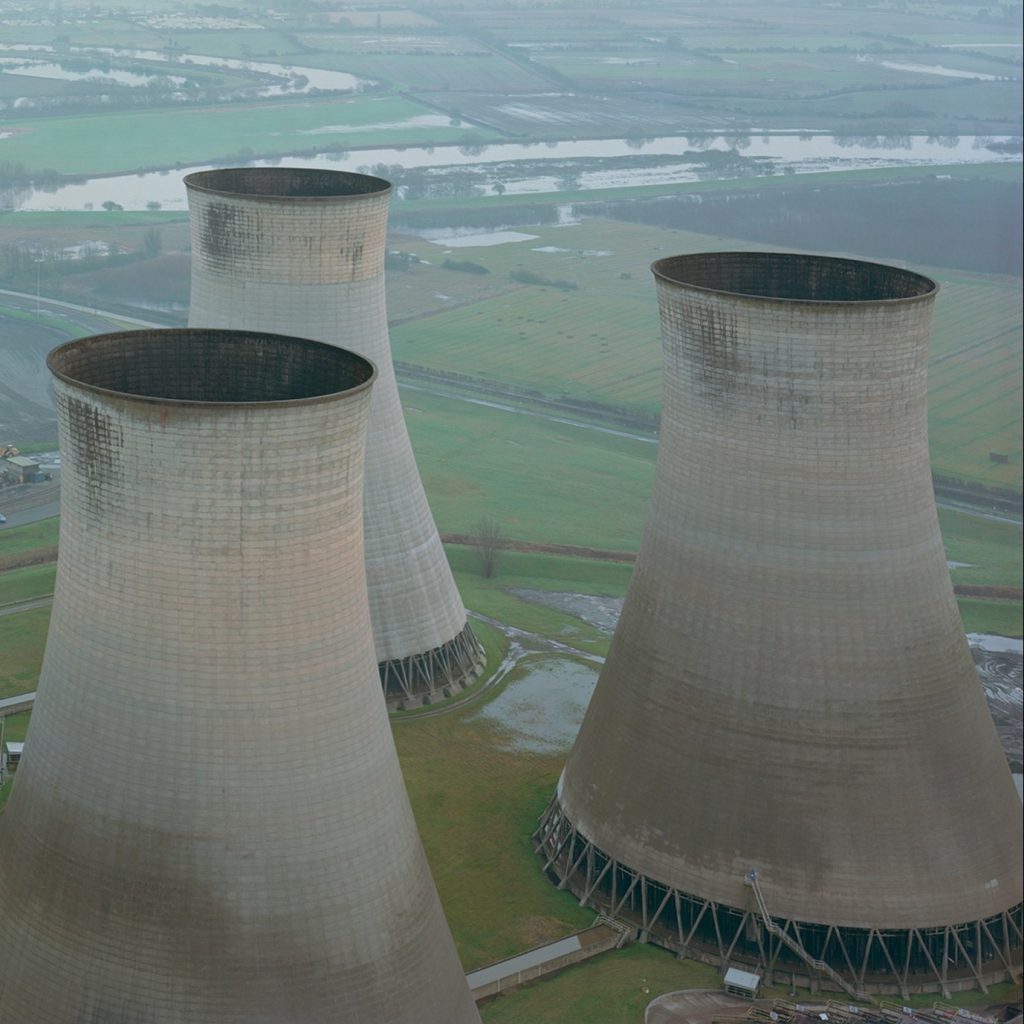
Listeria monocytogenes can contaminate cooling systems and cooling towers through various routes. Airborne contamination occurs when Listeria enters these systems through dust, soil, or other organic matter suspended in the air. Water contamination is another pathway where Listeria enters the system if the water is already contaminated. Listeria can thrive in cool, damp environments, making cooling systems an ideal breeding ground. Listeria biofilms can form on surfaces within water systems like cooling towers, providing a constant source of Listeria contamination.
Multiple measures are crucial for preventing Listeria contamination in cooling systems and towers. Firstly, regular cleaning and disinfection schedules should be established to eliminate potential Listeria contamination and prevent the buildup of biofilms. Treating the water used in cooling systems with appropriate disinfectants helps minimise the risk of Listeria contamination. Good hygiene practices, such as using clean tools and equipment, practising proper handwashing, and avoiding potential sources of contamination, should be followed. Regular inspections should be conducted to detect any signs of contamination or biofilm formation, allowing prompt action to prevent further contamination. Finally, providing training and education to personnel responsible for cooling system maintenance and operation on food safety, hygiene practices, and the risks associated with Listeria contamination is crucial. It’s important to note that specific measures may vary depending on the type and size of the cooling system, so consulting with experts in industrial hygiene and food safety is recommended for tailored guidance.
How Can ORAPI Help?
If you’re seeking an evaluation of your facility’s processes by ORAPI to determine your eligibility for certification, you can access our assistance through the recently launched ORAPI Partner Program.
By signing up for the ORAPI Partner Program, you will enjoy many more benefits, such as having a dedicated account manager to assess, evaluate, and customise solutions; product and application training to make you aware of the protocols as well as educate your staff; and priority liaising with 24/7 agile support on-demand among many more.
Conclusion: Listeria Contamination Hotspots
In conclusion, identifying and addressing the key areas where Listeria monocytogenes can hide is crucial for mitigating the risk of contamination and protecting public health. This article highlighted ten areas: raw materials, cracked hoses, stagnant water, conveyor systems, cleaning utensils, elevated structures, hard-to-reach areas, sewers and drains, maintenance tools, and cooling systems. In addition, implementing stringent quality control measures, proper cleaning and sanitation protocols, regular monitoring, and employee training are essential to prevent Listeria contamination.
